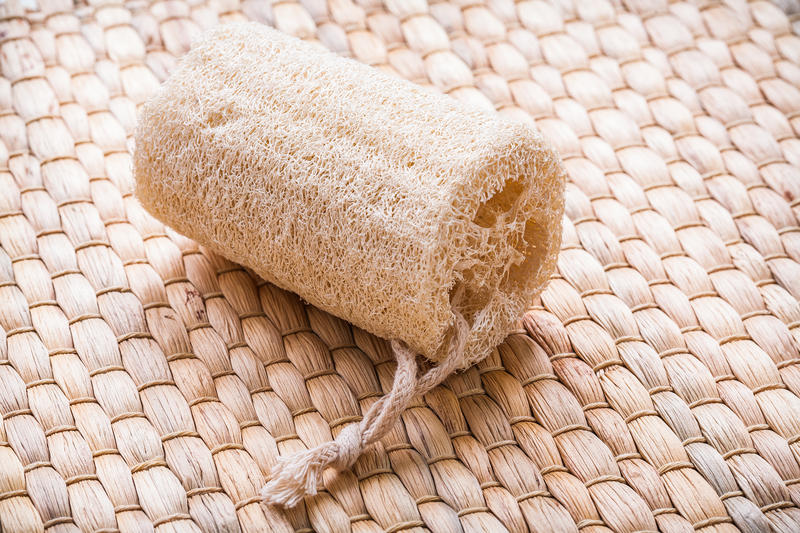Fresh Solutions for Combatting Damp Odors in Any Room
Posted on 03/07/2025
Fresh Solutions for Combatting Damp Odors in Any Room
Damp odors can quickly turn a welcoming room into an uncomfortable space. Whether you're dealing with a musty basement, a humid bathroom, or a stuffy living room, understanding how to eliminate damp smells is essential for a fresh, healthy indoor environment. This comprehensive guide offers innovative and proven solutions for fighting off persistent musty scents, improving air quality, and maintaining a pleasant atmosphere in every corner of your home.
Understanding the Causes of Damp Odors
Before diving into effective remedies, it's crucial to identify the root causes of damp odors. These unpleasant smells are most commonly caused by excess moisture, insufficient ventilation, and mold or mildew growth. Addressing the source of the problem ensures long-lasting results when combatting damp odors in any room.
Main Culprits Behind Musty Smells:
- Poor ventilation: A lack of fresh air allows humidity to build up, creating a breeding ground for must and mold.
- High humidity levels: Moisture trapped in walls, ceilings, carpets, or upholstery triggers the growth of bacteria and fungi.
- Mold and mildew: These microorganisms thrive in dark, damp conditions, emitting strong, persistent odors.
- Plumbing leaks or water damage: Unnoticed leaks often result in hidden damp spots hosting unpleasant smells.
- Inadequate cleaning: Dust, dirt, and organic matter can accumulate, promoting mildewy aromas, especially in rarely used spaces.

Step-by-Step Guide: Fresh Solutions for Damp Odor Removal
1. Identify and Address Moisture Sources
Combatting the root of damp odors requires eliminating excess moisture. Begin by inspecting your room for:
- Leaks: Check pipes, windows, basements, and ceilings for seepage or condensation.
- Condensation: Notice water droplets on cold surfaces, especially near windows or walls.
- Poor drainage: Ensure gutters and downspouts direct water away from your foundation.
Pro-Tip: Use a moisture meter to detect hidden dampness behind walls or beneath floors. Fix any leaks, seal cracks, and improve drainage to prevent recurring issues.
2. Improve Room Ventilation
Creating airflow is one of the freshest solutions for combatting damp odors in any room. It discourages mold growth and helps spaces dry out naturally.
- Open windows and doors regularly. Even a short burst of fresh air can help counteract mustiness.
- Use fans and exhaust systems. Ceiling fans, extractor fans, and portable options can circulate air steadily.
- Install trickle vents on windows to allow continuous, gentle airflow without drafts.
- Leave wardrobe or closet doors open occasionally to reduce trapped humidity.
3. Employ Effective Dehumidifying Techniques
Lowering humidity is key to removing damp odors from rooms. Consider these dehumidification tips:
- Run a dehumidifier: Ideal for basements, bathrooms, or laundry rooms. Set the humidity level between 40-60% for comfort and safety.
- Silica gel packs or moisture absorbers: Place in wardrobes, shelves, or drawers to keep small areas dry.
- DIY solutions: Bowls of uncooked rice or baking soda can absorb excess moisture in confined spaces.
4. Clean Thoroughly and Regularly
Comprehensive cleaning is non-negotiable in banishing musty odors. A regular cleaning schedule can stop the problem before it starts.
- Wash fabrics: Launder curtains, cushion covers, bedding, and other textiles frequently, as they trap scents easily.
- Clean carpets and rugs: Use a steam cleaner or professional carpet service to eliminate deep-seated odors, or sprinkle baking soda before vacuuming for a DIY approach.
- Scrub hard surfaces: Use mild detergent and water for walls, floors, and tiles. Consider vinegar or hydrogen peroxide solutions for tougher areas (test on a small patch first!).
- Declutter: Excess belongings hinder air movement and harbor dust, so keep spaces clutter-free.
5. Tackle Mold and Mildew Immediately
Mold and mildew are not just smelly--they can be hazardous to health. Here's how to address them:
- Wear protective gear: Gloves, goggles, and masks protect you from spores.
- Remove visible growth: Scrub affected areas with a mix of water and white vinegar, or a household fungicide.
- Fix the root cause: Repair leaks and improve ventilation to prevent recurrence.
- Dispose of porous items: Severe mold infestations may require you to throw out carpets, drywall, or insulation if they cannot be salvaged.
If the problem persists or covers a large area, call a professional remediation specialist.
6. Use Natural Odor Absorbers and Air Fresheners
Nature provides powerful alternatives for removing damp smells and restoring freshness to any room. Try these:
- Baking soda: Place open containers in corners or closets to absorb bad smells and humidity.
- Activated charcoal: Known for its odor-neutralizing properties, it's perfect for musty basements or wardrobes.
- Houseplants: Certain varieties like spider plants and peace lilies can help purify the air and regulate humidity.
- Essential oils: Natural fragrances like lavender, eucalyptus, or tea tree offer a pleasant scent and may have antifungal benefits.
- Vinegar: Place a bowl of white vinegar in the room overnight to absorb lingering damp odors.
Innovative Solutions for Stubborn Damp Odors
Ozone Generators* (with caution!)
Ozone machines are powerful tools that break down odor-causing molecules, but they must be used according to manufacturer guidelines, in unoccupied rooms only. Always ventilate thoroughly after use.
HEPA Filters and Air Purifiers
Modern air purifiers with HEPA and carbon filters can capture tiny particulates and neutralize persistent smells, significantly improving air quality in your entire home.
UV Lamps for Mold Control
Ultraviolet light devices installed in HVAC systems or as portable units can help kill airborne mold spores, reducing both odor and health risks.
Preventative Tips: Keeping Damp Odors at Bay
Once your room is odor-free, incorporate these proactive steps to ensure freshness year-round:
- Maintain optimal humidity: Use a hygrometer to monitor moisture; keep levels between 40-60% where possible.
- Regular inspections: Check for leaks, condensation, and discoloration that may indicate new dampness.
- Refresh airflow often: Open windows, operate exhaust fans, and rotate ceiling fans as needed.
- Seasonal deep cleans: Tackle under-furniture spots and behind appliances to prevent dust, mold, and must buildup.
- Store items wisely: Avoid stacking paper, fabric, or clothes directly on the floor, especially in potentially damp rooms.
- Invest in waterproofing: Apply sealants to basements, bathrooms, or exteriors as necessary.
Natural Remedies for a Lasting Fresh Scent
For a truly inviting atmosphere in any room, rely on safe, gentle methods to keep scents pleasant:
- Cedar blocks or chips: Place in drawers and closets to absorb moisture and impart a clean, woody aroma.
- Homemade sprays: Combine water, vodka, and essential oils for a simple room refresher.
- Dried herbs or potpourri: Sachets of dried lavender, rosemary, or citrus peel can subtly scent small areas.
When to Seek Professional Help
If you've tried all the above damp odor solutions and the smell persists--or if you suspect black mold or water damage--consider reaching out to:
- Mold remediation experts
- Licensed plumbers
- Home restoration professionals
This step ensures safety and preserves the value of your property, especially following floods or extensive damage.

Quick Reference FAQ: Freshening Up Any Room
- How do I get rid of musty smells fast? Ventilate immediately, remove damp items, and sprinkle baking soda or set out a bowl of vinegar to absorb odors overnight.
- What's the best way to remove mildew odor from fabrics? Wash with hot water, add a cup of vinegar or baking soda, and dry in direct sunlight when possible.
- Are commercial air fresheners effective? They can mask odors temporarily, but removing sources of humidity and cleaning thoroughly is more effective.
- Does repainting remove damp odor? Only if the underlying moisture issue is addressed first. Otherwise, odors will return and paint may peel.
Conclusion: Say Goodbye to Damp Odors for Good
Combatting damp odors in any room requires a comprehensive approach: pinpointing moisture sources, improving ventilation, using both natural and technological remedies, and staying vigilant with regular cleaning. By following these fresh solutions, you'll secure a healthy, comfortable environment for your family and guests--no matter the season or space.
Remember: Persistence is key. With a little effort and the right techniques, any room in your home can be revitalized--free from musty, damp odors for good.



